| Home | Start key | Fact sheets | Glossary | Common flowers | ||
Echinacea MoenchAsteraceae (Heliantheae tribe) |
||||||
Alternate trade names
coneflower, purple coneflower Common names
coneflower, purple coneflower Species cultivated
Most commonly cultivated Echinacea purpurea (L.) Moench (=Rudbeckia purpurea L.1) Other species E. pallida (Nutt.) Nutt. E. paradoxa (Norton) Britton1 E. tennesseensis (Beadle) Small1 Origin
Central to eastern U.S. Brief characterization
Rough, hairy stems bearing alternate, simple, entire to slightly toothed, bristly leaves; flowers (florets) in solitary, radiate heads 10-15 cm across; head subtended by involucre of awl-shaped, recurved phyllaries in 2-4 series; receptacle sharply, narrowly conical, bearing conspicuous, thick, spinelike scales longer than disc florets; mature central disc cone-shaped or ovoid; pappus a short crown. Cultivar and/or species variation
Sometimes the ray florets are removed and the head sold as a fresh or dried flower (e.g. Echinacea pallida); heads single, with ray florets horizontal to drooping, most often pink, purple, red, or white, less often yellow, orange, and other colors; disc copper- or orange-brown to green-yellow, owing largely to disc scale color. May be confused with
Echinacea differs from Rudbeckia in having disc scales longer than the florets, and in having usually purple ray florets. Countries exporting
South Africa |

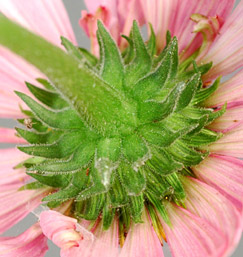 |
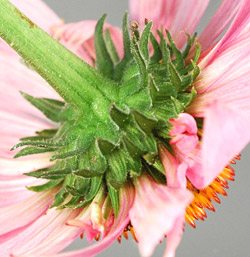 |
|
Echinacea sp.: involucre
in two views |
||
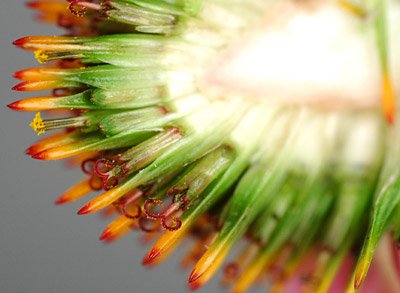
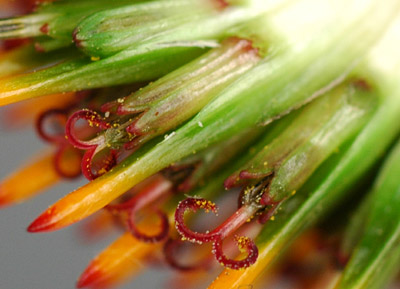
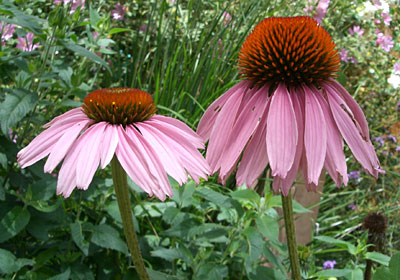
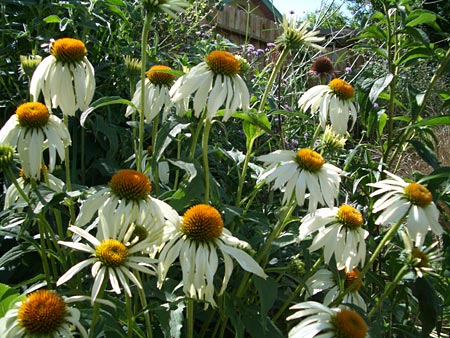

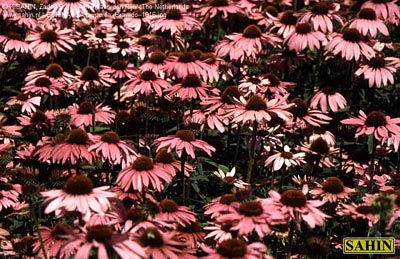
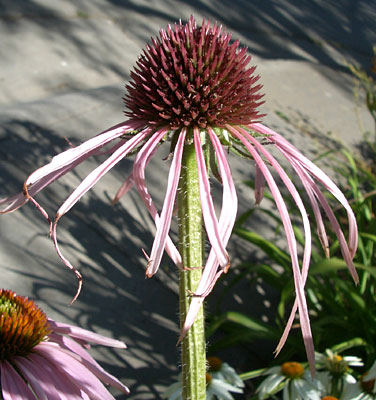
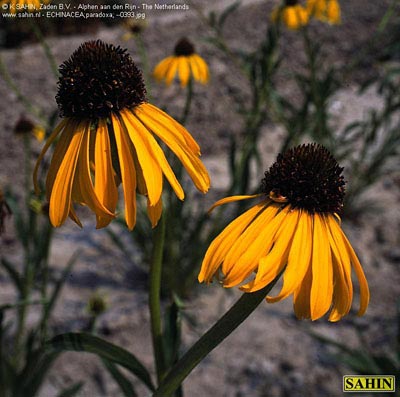
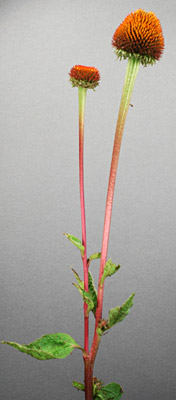 |
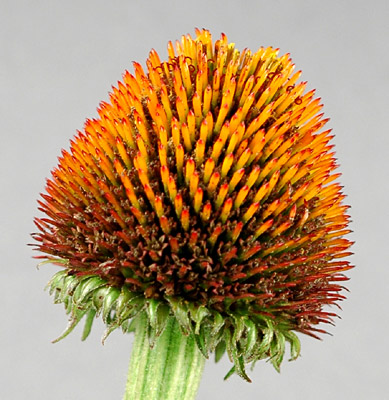 |
|
Echinacea sp.: ray florets
removed, stem (left), head (right) |
||